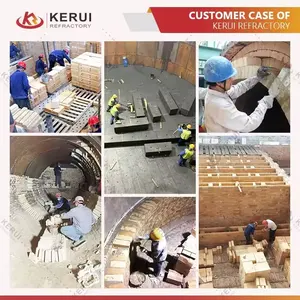
Refractory Widely Used Firebricks Insulation Customized Insulating Fire Refractory Brick For Furnace

KERUI Magnesium Carbon Brick Price Ultra-Good Wear Resistance Magnesia Carbon Negative Brick For Electrolytic Process




















Magnesia carbon bricks are a type of refractory material crucial in high-temperature thermal environments. These bricks are composed of magnesium oxide (MgO) and carbon, offering exceptional resistance to thermal shock and high temperatures. They are commonly utilized in various industrial applications, including the linings of furnaces, kilns, incinerators, and reactors.
The utility of magnesia carbon bricks extends to their versatility in different settings. These refractory materials are essential in the metallurgical industry for lining basic oxygen furnaces (BOFs) and electric arc furnaces (EAFs). Additionally, they serve a vital role in the construction of ladles and converters due to their thermal resistance and durability. The application of these bricks is not limited to large-scale industrial uses; they are also found in smaller-scale operations, such as the lining of crucibles and molds in foundries.
Magnesia carbon bricks boast a range of features that make them suitable for environments subjected to extreme conditions. Their high resistance to oxidation and erosion is particularly beneficial in maintaining structural integrity under intense heat and corrosive materials. Furthermore, their low porosity and high density contribute to their overall longevity and performance in demanding applications.
The quality of magnesia carbon bricks is determined by their material composition. These bricks typically contain a blend of high-purity magnesia and high-quality carbon, often reinforced with antioxidants to enhance their performance. The precise composition of these bricks can be tailored to meet specific operational requirements, ensuring optimal compatibility with various industrial processes.
When selecting magnesia carbon bricks, it is important to consider the specific needs of the application. Factors such as the operating temperature, the presence of corrosive agents, and the level of thermal shock the bricks will be subjected to should guide the selection process. It is also crucial to evaluate the mechanical stresses that the bricks will encounter to ensure they can withstand the demands of the application.
In addition to their technical attributes, magnesia carbon bricks are recognized for their environmental and safety advantages. Their ability to withstand high temperatures can contribute to energy efficiency in industrial processes by minimizing heat loss. Moreover, their durability reduces the need for frequent replacements, thereby decreasing waste and associated environmental impacts.